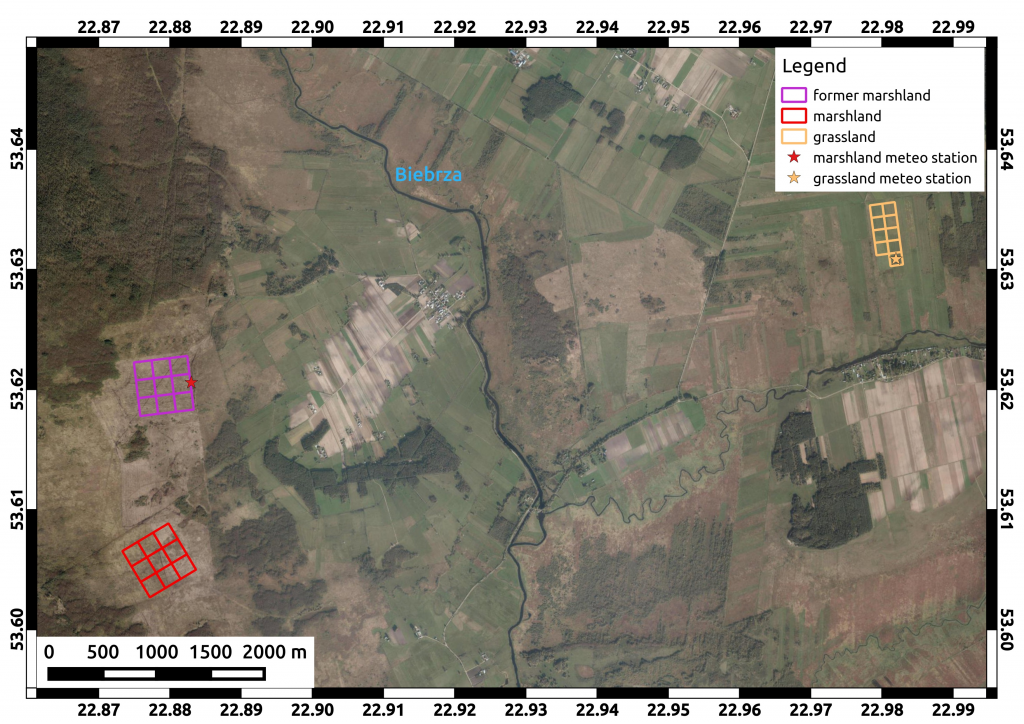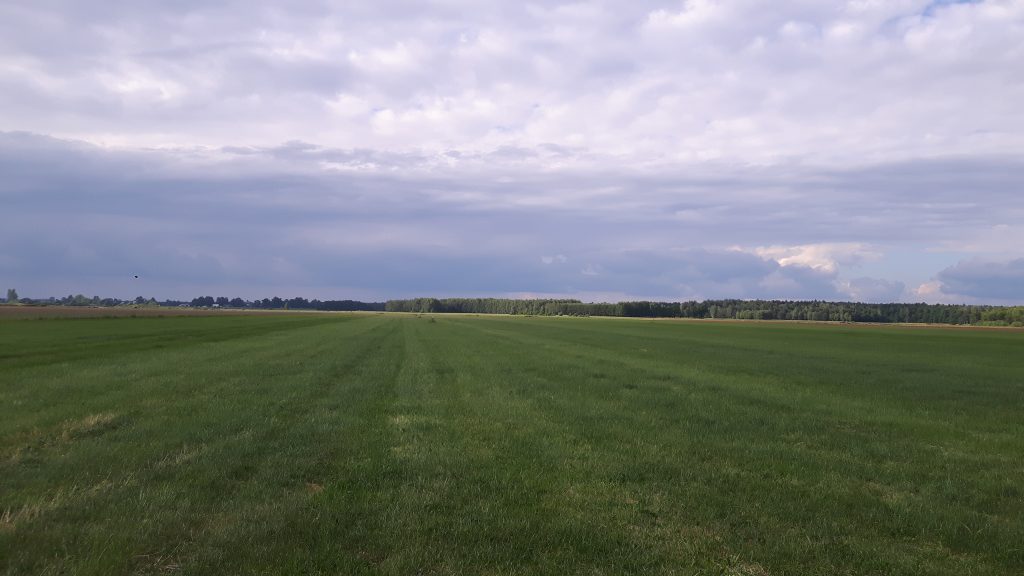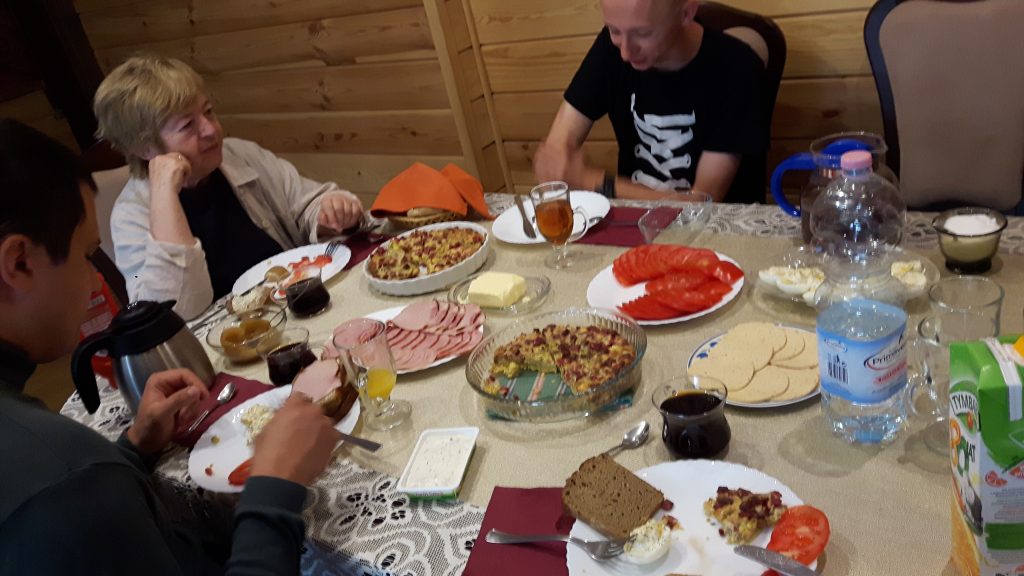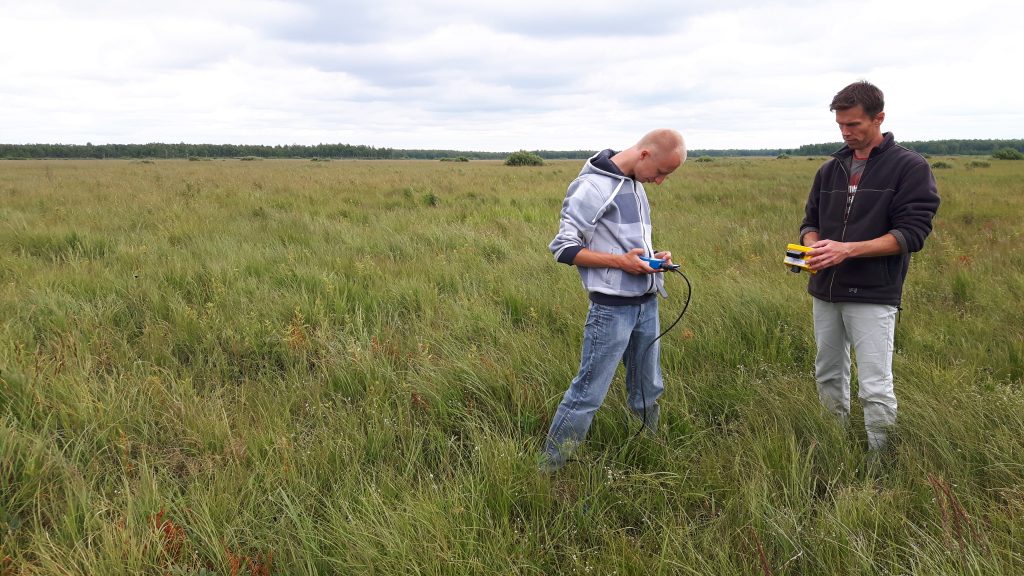I recently took part in one of the Instytut Geodezji i Kartografii’s monthly field campaigns in the Biebrza national park, Poland, in support of the Copernicus Sentinel-1 mission.

Campaign site in Biebrza national park, Poland.
Led by Katarzyna Dabrowska-Zielinska and Jan Musial, the campaign sets out to establish a soil-moisture measurement network to validate data from the Sentinel-1 radar mission. To do this, two sites were selected: one in grassland and another in marshland.

Grassland site in Poland used to validate data from the Sentinel-1 mission. (ESA)
The grassland site has stations arranged in two rows (230 x 580 m), one row with four stations and second with five stations. The marshland site has a 500 x 500 m measuring grid with nine soil-moisture stations, each equipped with five probes. The distance between the two sites is 7 km.
I arrived in a very cosmopolitan and warm Warsaw on the Sunday. The following morning I met with the team for a short progress meeting, after which we got on the road and headed for Biebrza 200 km away. After a four-hour journey we arrived at a small village on the edge of the park.

Taking measurements on the grassland site to support the Sentinel-1 mission. (ESA)
From here, we made our way to the grassland site to start taking measurements. Since the grass is cut a few times a year, it is considered as ‘managed’ – and, indeed, the grass was quite short. In spite of the instrumentation taking measurements of soil moisture continuously, the monthly campaigns include using probes to make measurements around the station. This also includes measurements of surface temperature, chlorophyll content and leaf area index. The institute tries carry out the monthly campaigns to coincide overpasses of the Sentinel-1 satellites.
A delicious home-cooked Polish dinner followed our first day of measurement taking.
The next day started early with typical hearty Polish breakfast, with lots of meat choices. This provided the all the energy we need to walk around the marshland site, where we would do most of the day’s measurements.

A hearty Polish breakfast before a full day of taking soil-moisture measurements. (ESA
Luckily for me, the marshlands were quite dry so we could drive very close to the soil moisture stations and then walk a short distance through 1 m high grass and on uneven ground, not easy!

Taking similar measurements on the marshland site. (ESA)
We began my servicing the meteorological station and then headed to the soil moisture stations, basically repeating the same procedure as the day before.
Over the two days, I could appreciate how Biebrza is a truly amazing park. Apparently it’s quite popular with bird watchers, it offers beautiful landscapes adorned with several kinds of wild flowers.
It was soon time to head back to Warsaw and time to watch the football match Poland v Ukraine (Poland won).
I will finish by thanking Katarzyna and her extremely hard-working team for making me feel so welcome and introducing me to the challenges of soil-moisture ground field work.
Post from: Tânia Casal (ESA Earth Observation campaigns coordinator)








Discussion: no comments